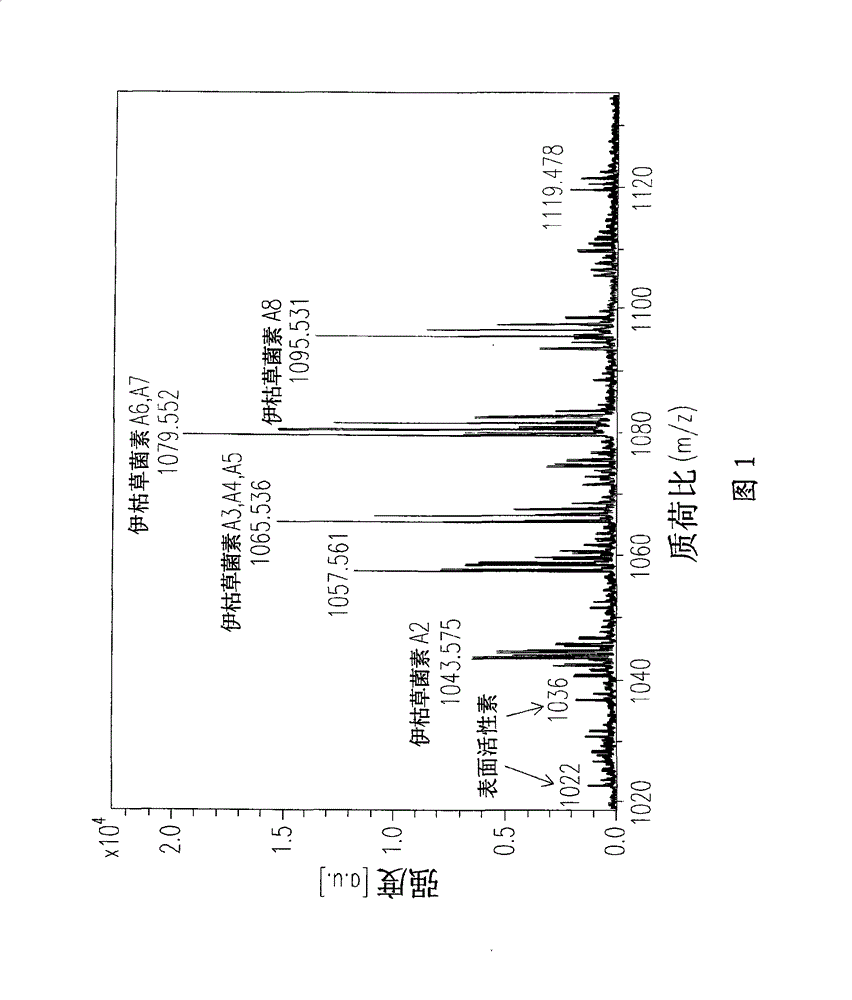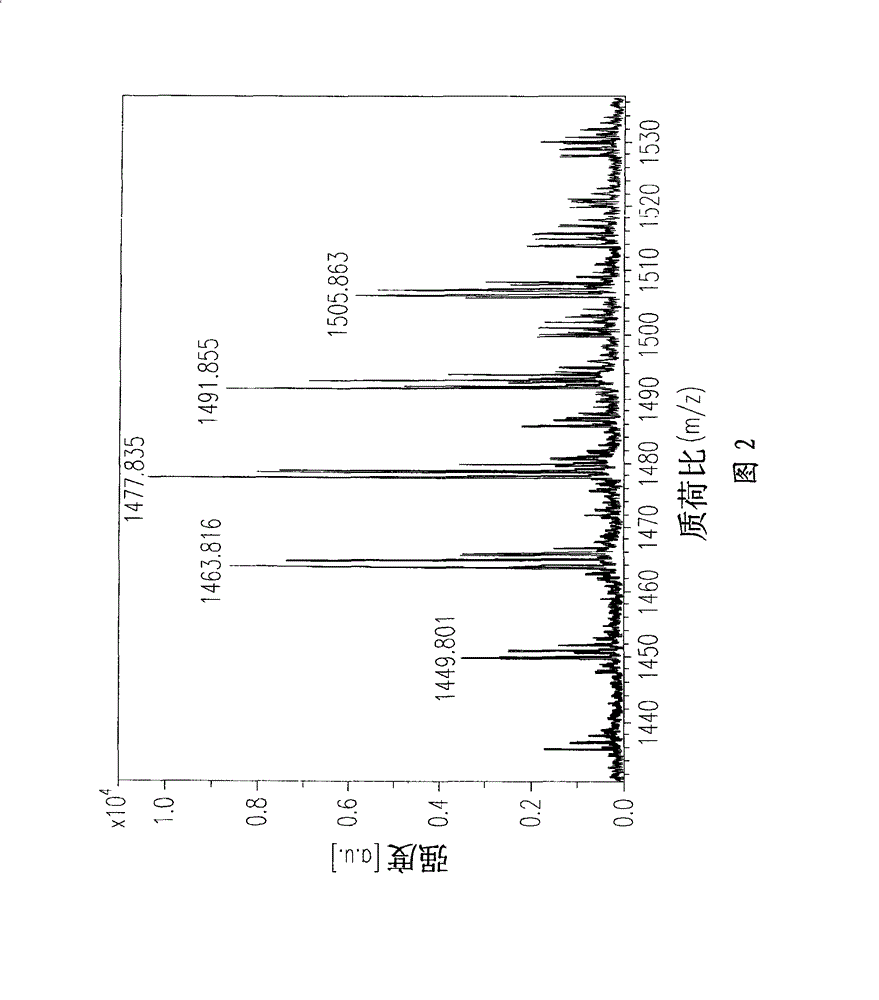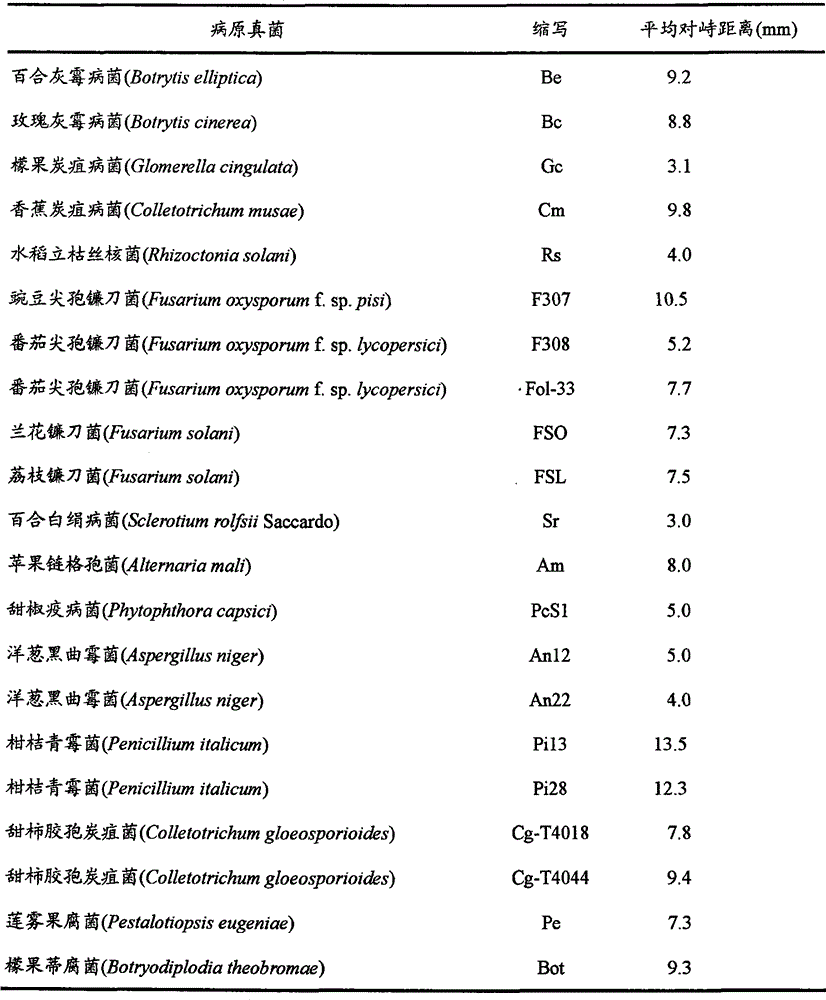Novel Bacillus amyloliquefaciens strain and application thereof
A technology of bacillus and liquefied starch, which is applied in the novel strain of bacillus amyloliquefaciens and its application field, can solve the problems of harming the human body and the environment, and achieve the effects of promoting health, reducing the amount of thrombus, preventing and treating cardiovascular diseases
- Summary
- Abstract
- Description
- Claims
- Application Information
AI Technical Summary
Problems solved by technology
Method used
Image
Examples
Embodiment 1
[0026] Example 1: Characterization of novel Bacillus amyloliquefaciens
[0027] The novel Bacillus amyloliquefaciens (B. amyloliquefaciens Ba-BPD1) was screened by the inventor from the soil of Lishan, Taichung County, Taiwan, and further cultivated, identified and preserved. When culturing Bacillus amyloliquefaciens Ba-BPD1, a single colony thereof was inoculated and grown overnight in 6 ml of LB broth (Luria-Bertani, Miller, Difco). The cultured bacterial solution was then inoculated in 500ml LB culture medium at a ratio of 1 / 100, and cultured at 30°C and 150rpm for 6 days.
[0028] In addition, compared with other bacteria, Bacillus amyloliquefaciens Ba-BPD1 has a specific 16S ribosomal RNA sequence, and part of its 16S ribosomal sequence has been sequenced, and will be published in the US National Biotechnology Information on December 31, 2009 Central website (National Center for Biotechnology Information, NCBI, http: / / www.ncbi.nlm.gov / Genbank / ), its gene bank (GenBank)...
Embodiment 2
[0030] Example 2: Amylolytic enzyme produced by Bacillus amyloliquefaciens Ba-BPD1
[0031] In order to demonstrate that Bacillus amyloliquefaciens Ba-BPD1 can produce amylolytic enzyme (amylase) to hydrolyze starch, the amylase hydrolysis test is described below. A single colony of Bacillus amyloliquefaciens Ba-BPD1 was picked from a nutrient agar medium (nutrient agar (NA) plate) and mixed with 50 μl of sterile water as a bacterial solution. Then, drop this 50 μl bacterial liquid on a filter paper with a diameter of 1 cm, and place it on a yeast extract-soluble starch agar (yeast extract-soluble starch agar (YSA) plate, containing 1.0% yeast extract, 1.0% soluble starch and 1.5% agar). Place the YSA medium at 30°C for 2 to 3 days. After culturing, cover the YSA medium with 3 to 4ml iodine solution (containing 0.3% (w / v) iodine and 3% (w / v) potassium iodine (potassium iodine)), and measure the Ba- Colony size and clear zone size of BPD1. A blue-black coloration of the m...
Embodiment 3
[0033] Embodiment 3: the proteolytic enzyme produced by Bacillus amyloliquefaciens Ba-BPD1
[0034] To demonstrate that Bacillus amyloliquefaciens Ba-BPD1 produces proteolytic enzymes (proteases) to hydrolyze proteins, the proteolytic assay was described below. The bacterial liquid of Bacillus amyloliquefaciens Ba-BPD1 was prepared as described in Example 2. Drop 50 μl of bacterial liquid on a filter paper with a diameter of 1 cm, and place it on a skim milk agar (SMA) plate containing 1.5% skim milk powder, 1.3% nutrient broth (Nutrient broth, NB) and 1.5% agar ) on (Elsheikh, L, E., Bergman, R., Cryz, S.J.Jr. and Wretlind, B.A comparison of different methods for determining elastaseactivity of Pseudomonas aeruginosa strains from mink. Acta Pathol. Microbiol. Immunol. Scand. Sect. B , Microbiol. 1986. 94(3): 135-8). The SMA medium was cultured at 30° C. for 2 to 3 days, and the colony size and dissolution zone size of Bacillus amyloliquefaciens Ba-BPD1 were measured. The...
PUM
| Property | Measurement | Unit |
|---|---|---|
| diameter | aaaaa | aaaaa |
Abstract
Description
Claims
Application Information
 Login to view more
Login to view more - R&D Engineer
- R&D Manager
- IP Professional
- Industry Leading Data Capabilities
- Powerful AI technology
- Patent DNA Extraction
Browse by: Latest US Patents, China's latest patents, Technical Efficacy Thesaurus, Application Domain, Technology Topic.
© 2024 PatSnap. All rights reserved.Legal|Privacy policy|Modern Slavery Act Transparency Statement|Sitemap



